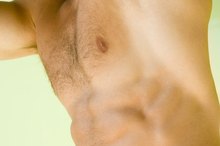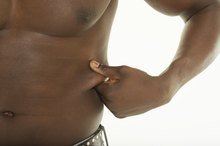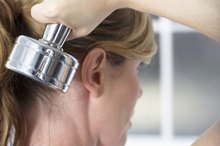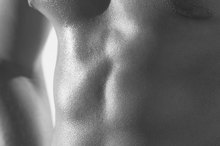What does fact checked mean?
At Healthfully, we strive to deliver objective content that is accurate and up-to-date. Our team periodically reviews articles in order to ensure content quality. The sources cited below consist of evidence from peer-reviewed journals, prominent medical organizations, academic associations, and government data.
- American Council on Exercise: So, You Want to Spot Reduce? Here’s How
- Centers for Disease Control and Prevention: Balancing Calories
- American Council on Exercise: Weight Loss: Diet vs. Exercise
- Centers for Disease Control and Prevention: Cutting Calories
- American College of Sports Medicine: Resistance Training for Health and Fitness
- American College of Sports Medicine: Resistance Training for Health and Fitness
The information contained on this site is for informational purposes only, and should not be used as a substitute for the advice of a professional health care provider. Please check with the appropriate physician regarding health questions and concerns. Although we strive to deliver accurate and up-to-date information, no guarantee to that effect is made.
How to Get Rid of Fat Under Your Chin
A surplus of fat under your chin can make button-down collared shirts uncomfortable to wear and even diminish your self-confidence. Although you might feel discouraged if you have a significant amount of weight to lose, the answer lies in healthy lifestyle changes. It's not possible to selectively burn your chin fat, but you can slowly melt away this issue through exercise and diet.
Spot Reduction Isn't a Possibility
You're far from being the only person who questions whether you can burn the fat in a chosen area. According to CNN Health, this premise -- called spot reduction -- is among the most persistent of misconceptions surrounding exercise 2. Working any group of muscles burns calories, but doesn't decrease the amount of fat around the muscles in question. Thus, trying to find a neck exercise isn't the best use of your workout time.
- You're far from being the only person who questions whether you can burn the fat in a chosen area.
- Working any group of muscles burns calories, but doesn't decrease the amount of fat around the muscles in question.
Set Your Sights on a Deficit
How to Get Rid of Arm Fat Fast
Learn More
Fat loss takes place on a concurrent basis from several areas of your body when you're able to reach a caloric deficit. In this deficit, you're consuming fewer calories through food and drink than your body needs for energy. If you can consistently keep your body in this state, you'll experience fat loss. You can lose between one and two pounds per week if you create a weeklong caloric deficit of 3,500 to 7,000 calories.
- Fat loss takes place on a concurrent basis from several areas of your body when you're able to reach a caloric deficit.
- If you can consistently keep your body in this state, you'll experience fat loss.
Get Moving to Burn Fat
Regular aerobic exercise is a key component in your quest to achieve a caloric deficit and get rid of fat under your chin. If you wish to exercise at a moderate rate by performing activities such as walking briskly or performing water aerobics, aim to exercise at least 300 minutes per week. For vigorous aerobic activities, such as aerobic dance, jogging and swimming laps, exercise at least 150 minutes per week. Each of these activities burns calories at a different rate. For example, a 200-pound person burns about 426 calories in 60 minutes of walking at 3 mph and 613 calories in 30 minutes of jogging at 7 mph.
- Regular aerobic exercise is a key component in your quest to achieve a caloric deficit and get rid of fat under your chin.
- If you wish to exercise at a moderate rate by performing activities such as walking briskly or performing water aerobics, aim to exercise at least 300 minutes per week.
Skip the Fries and Dessert
How to Do Bicycles to Lose Belly Fat
Learn More
Successfully burning fat often requires changes to your diet in addition to regular exercise. By considering your exercise and diet, you can develop an overall healthy lifestyle. The key dietary change to make is a reduction in your caloric intake, and especially a reduction in foods that are high in sugar and saturated fats. Cut calories by avoiding sweetened beverages and high-fat foods such as potato chips and fries; opting for dairy products made with skim milk and limiting unhealthy meals to one "cheat day" per week.
- Successfully burning fat often requires changes to your diet in addition to regular exercise.
Strengthen Your Fat Burn
Strength training should play a role in your workout regimen if you're intent on losing weight. These exercises, which include using weight machines, lifting free weights or performing body-weight exercises, increase the strength of your muscles. Examples of exercises to include in your workout are the barbell bench, squats with dumbbells and pushups. Stronger muscles, in turn, escalate your metabolism to speed up your ability to burn fat. Find time for at least two strength-building workouts every week and remember to perform exercises to strengthen each of your body's major muscles.
- Strength training should play a role in your workout regimen if you're intent on losing weight.
- Find time for at least two strength-building workouts every week and remember to perform exercises to strengthen each of your body's major muscles.
Related Articles
References
- American Council on Exercise: So, You Want to Spot Reduce? Here’s How
- CNN Health: 10 Exercise Myths That Won't Go Away
- Centers for Disease Control and Prevention: Balancing Calories
- Centers for Disease Control and Prevention: Measuring Physical Activity Intensity
- Centers for Disease Control and Prevention: How Much Physical Activity Do Adults Need?
- American Council on Exercise: Weight Loss: Diet vs. Exercise
- Centers for Disease Control and Prevention: Cutting Calories
- American College of Sports Medicine: Resistance Training for Health and Fitness
- University of Maryland Medical System: Calories Burned Calculator
- Hall KD, Sacks G, Chandramohan D, et al. Quantification of the effect of energy imbalance on bodyweight. Lancet. 2011;378(9793):826-37. doi:10.1016/S0140-6736(11)60812-X
- Centers for Disease Control and Prevention. Physical activity for a healthy weight. Updated May 15, 2015.
- Viana RB, Naves JPA, Coswig VS, et al. Is interval training the magic bullet for fat loss? A systematic review and meta-analysis comparing moderate-intensity continuous training with high-intensity interval training (HIIT). Br J Sports Med. 2019;53(10):655-664. doi:10.1136/bjsports-2018-099928
- Ainsworth BE, Haskell WL, Herrmann SD, et al. 2011 Compendium of Physical Activities: A second update of codes and MET values. Med Science Sports Exerc. 2011;43(8):1575-1581. doi:10.1249/mss.0b013e31821ece12
- Donnelly JE, Blair SN, Jakicic JM, Manore MM, Rankin JW, Smith BK. Appropriate physical activity intervention strategies for weight loss and prevention of weight regain for adults. Med Science Sports Exerc. 2009;41(2):459-471. doi:10.1249/mss.0b013e3181949333
- Sanghvi A, Redman LM, Martin CK, Ravussin E, Hall KD. Validation of an inexpensive and accurate mathematical method to measure long-term changes in free-living energy intake. Am J Clin Nutr. 2015;102(2):353-358. doi:10.3945/ajcn.115.111070
Resources
Writer Bio
Toronto-based journalist William McCoy has been writing since 1997, specializing in topics such as sports, nutrition and health. He serves as the Studio's sports and recreation section expert. McCoy is a journalism graduate of Ryerson University.









